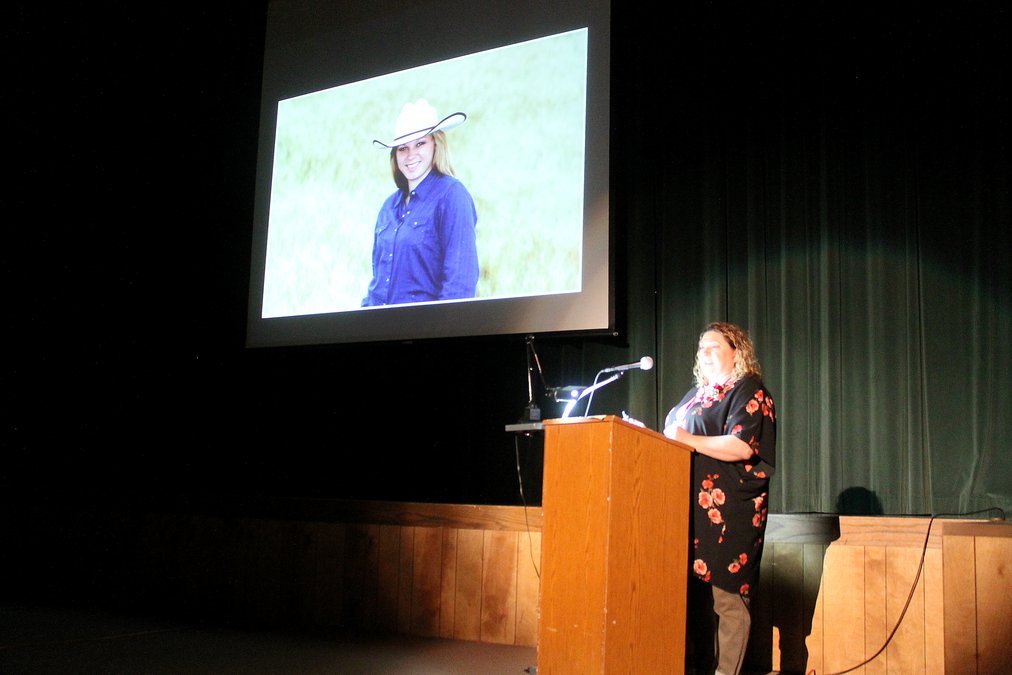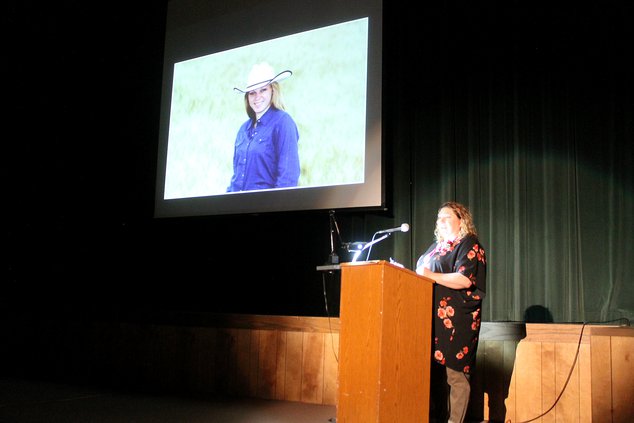LARNED — Thursday night, young and old gathered at the Larned Community Center to hear first hand the accounts of individuals, some neighbors and friends, who have been profoundly affected by distracted driving. Their similar tragedies underscored their common message, that answering that text or sending that snap is simply not worth it. It was the first in a series of community conversations hosted by Pawnee Valley Community Hospital aimed at bringing awareness to how distracted driving has, according to statistics cited during the evening, has claimed the lives of at least 300 Kansans so far this year.
Ryan Webster, pastor at Larned Assembly of God, emceed the evening. He talked of the toughest job he has as a pastor — making death notifications to families who have lost a family member. He asked attendees to turn their phones off and focus their whole attention on the message the women had to offer.
Amy Schmitt, Larned, lost her 17-year-old daughter, Amber Rose Schmitt, in 2009 when she was killed after losing control of her truck. The incident happened late one summer night, as Amber was sending a text while driving, Schmitt said. As she spoke, an album of family photos appeared on a screen behind her. She shared her last moments with her daughter, and her memories, and the unrealized hopes and dreams she had for Amber.
Schmitt held up the small flip phone that her was texting on when she ran into the rear of a semi truck while driving. Phones have changed a lot since 2009, and that has made them more dangerous today, she said.
“Each one of you have a choice from now on to put your phone away,” Schmitt said. “You have a choice to speak up if someone who is driving, and you are in the vehicle, is distracted. You have a choice to speak up and say “my life is more than that, your life is more than that.”
When you are distracted, only 20 percent of your cognitive thinking is on the road, and 80 percent is on whatever you are doing at hand.Amy Schmitt, mother of Amber Rose Schmitt, who died in 2009 after texting while driving
Phones have changed alot since 2009, and today’s added features have made them more dangerous she noted. Now, nine parents every day receive the same phone call she received in 2009. She doesn’t want another one to receive that call, and that, she said, is why she decided to share her family’s story about the dangers of distracted driving.
Amber Rose’s last text was “I am not drinking,” just before her wheel dipped off the road. Her overcorrection resulted in her flipping her truck, and because she was not wearing a seatbelt, she was ejected from the vehicle, which ended her life.
Schmitt pointed out parents need to do as good a job at preaching to their children to put their phones away when they are driving as they are about preaching of the dangers of drinking and driving.
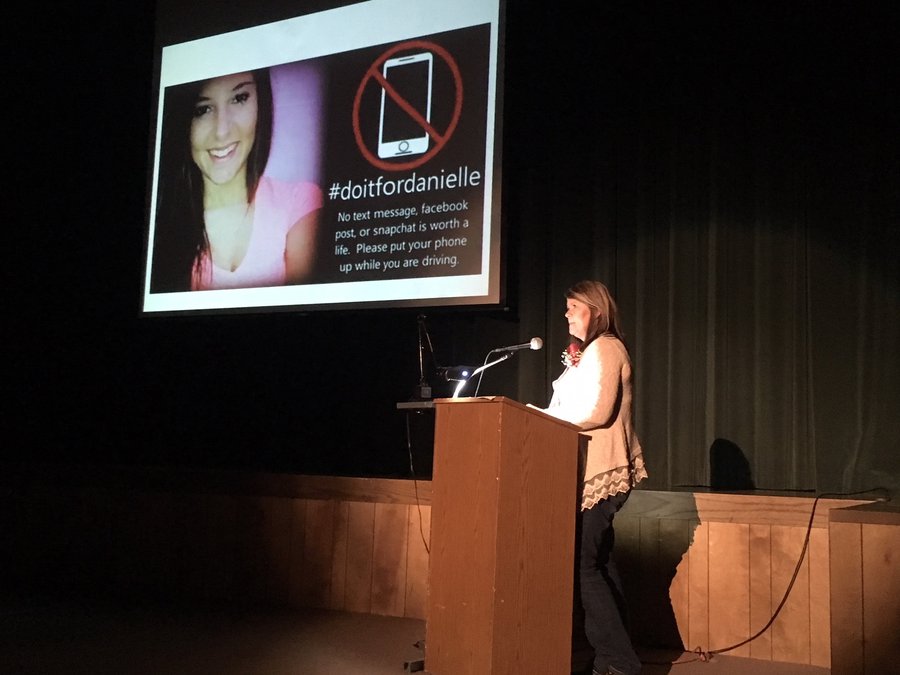

Webster then introduced Jacque Tierce, Larned, who lost her daughter, Danielle Garcia, in May of this year. The 22-year-old mother of one died of injuries sustained when she rear-ended a semi-truck while travelling an estimated 70 mph in her car. She was sending a photo via Snapchat to a friend.
Tierce’s heartfelt description of events was emotional at times, punctuated with several photos of her daughter throughout high school and early motherhood.
She described Garcia’s funeral, and the request Webster made to those attending. He asked friends and family to adjust the settings on their phones to automatically respond to phone calls and texts with the “do not disturb” message while they are driving. He also asked them to share a visual meme on their own social media pages which included a photo of Garcia, and the hashtag : #DoitforDanielle.
Tierce has since spoken to groups of young people about the dangers of distracted driving, and has led a craft to encourage drivers to put their phones away. She calls it a “I Love You More box.” A small, clear plastic phone-sized box is decorated with photos of all the things and people the user would lose if their distracted driving resulted in an accident. Drivers put their phones in the box while they are driving, so if they reach for their phones, they are reminded that,“It’s not worth it.”
Three types of distracted driving:
Manual distraction-- taking your hands off the wheel.
Visual distraction -- taking your eyes off the road
Cognitive distraction -- taking your mind off your driving (the most deadly)
The final speaker was Shiane Wondra, Mead, who in June of this year, wrecked her parent’s brand new car and ended up being life-flighted to Wichita with serious injuries sustained when she was Snapchatting a friend while she was driving to meet family members at Horsethief Reservoir one Saturday afternoon. She rear-ended a semi-truck travelling nearly 70 mph.
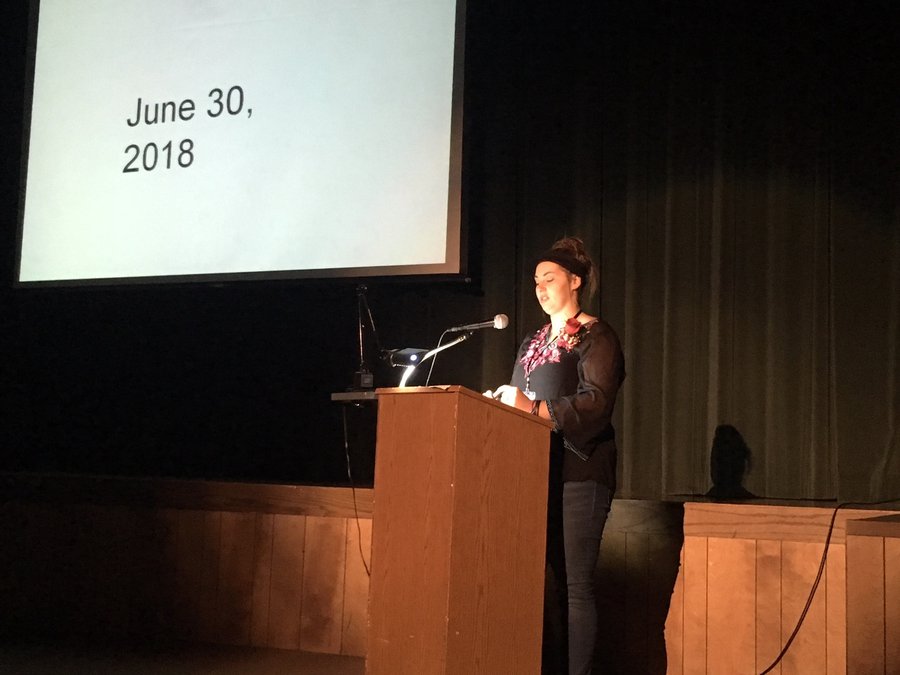
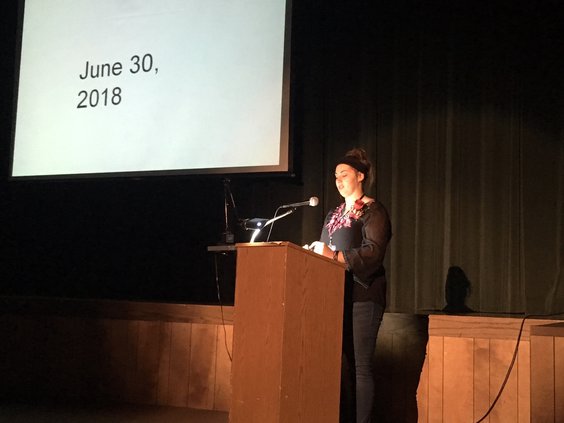
Wondra is a multi-sport athlete. She’s also the daughter of a nurse and a fire fighter, and the sister of a police officer.
“I’ve been told multiple times not to text and drive,” she said. She shared the statistic that distracted driving is now the number one cause of death teens. “It’s not if, it’s when.”
She hopes sharing her story will save a life.
Webster then asked attendees to take out their phones, and alter their phone settings as he did at Danielle’s funeral in May. He also introduced Pawnee Valley Community Hospital Foundation Director Julie Bugner-Smith, who provided background on why PVCH chose this topic for a Community Conversation. She and Schmitt have worked together for the past year. She was not aware of Schmitt’s story, until Garcia’s death in June.
Garcia was an employee at PVCH, Smith said. Two deaths within the hospital family, plus Wondra’s near-death experience shook the staff of this small rural community hospital, she said. She hoped bringing the community’s attention to just how many people have been affected by distracted driving, and to bring awareness so people will take the threat seriously.
Smith invited attendees to ask questions.
Schmitt asked everyone to raise their hands if they had driven distracted, and nearly all raised their hands. She asked who, after hearing their stories, had changed their minds. Again, nearly all raised their hands.
The Tribune asked Wondra, “Since your accident, when you have been driving with friends or family, have you ever since then had occasion to ask someone to put their phone down?”
“Yes,” Wondra replied.” She described her friend picking up her phone while the two were driving. “I just looked at her and said, “Really?” It was like, “I’m sitting right her. I just went through something that changed my life, and it should have changed yours too. Everyday I still have people on Snapchat posting on their story that they are snapchatting and driving. Ten minutes before this, I had someone to stop snapchatting me while driving and if they keep doing that, to delete me off their snapchat because I don’t want to see it.”
The auditorium erupted into applause at her words.
When the room quieted, Wondra added that since June of 2017, three young people in her own town have died of distracted driving. One had the same accident Amber Rose had, another was killed when his friend turned right in front of a semi, and the third was driving drunk, speeding and rolled his vehicle on a curve. Two of the three were in school with Wondra, the other graduated in 2015.
“All I have of them are just the memories,” she said.
